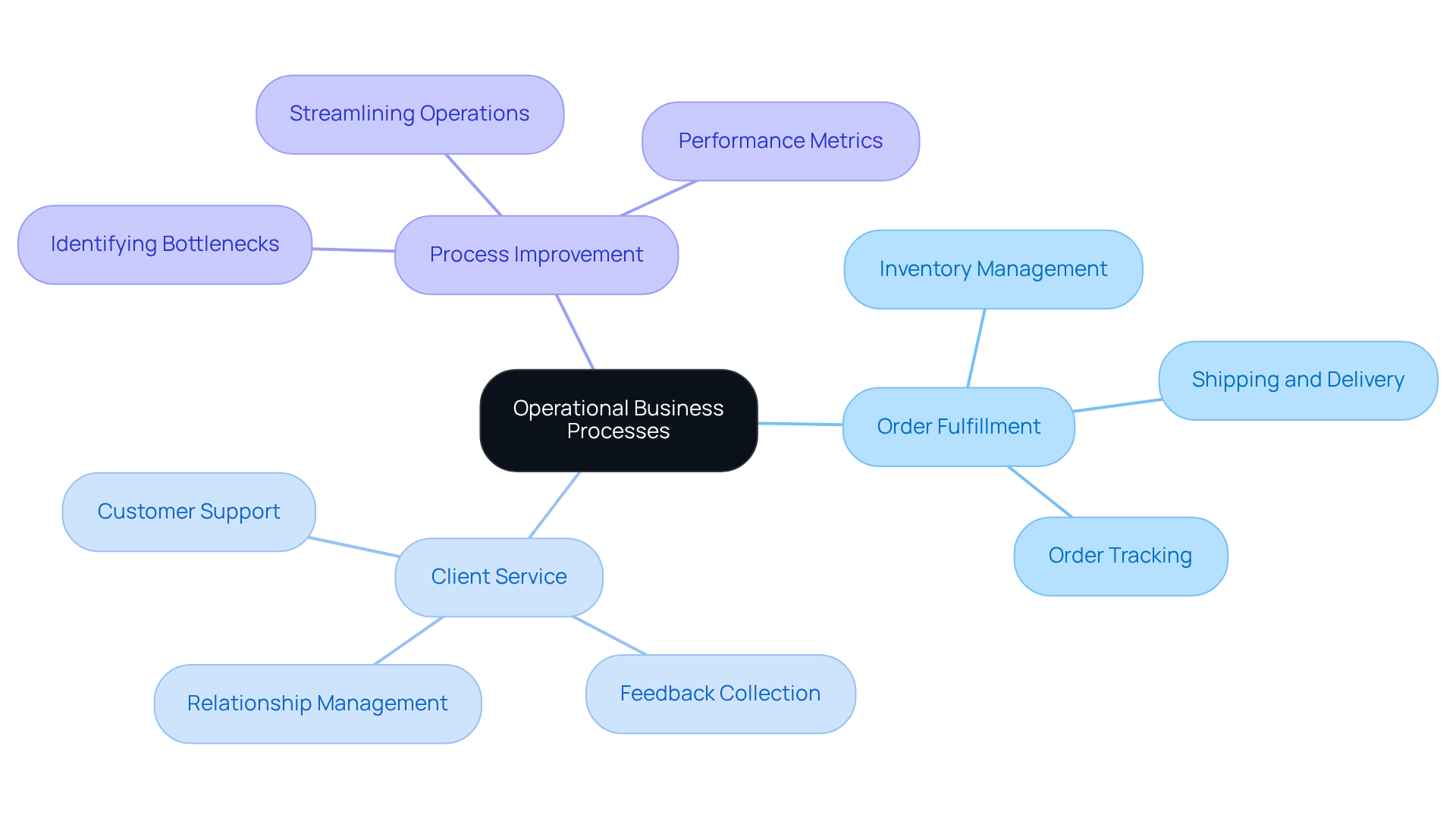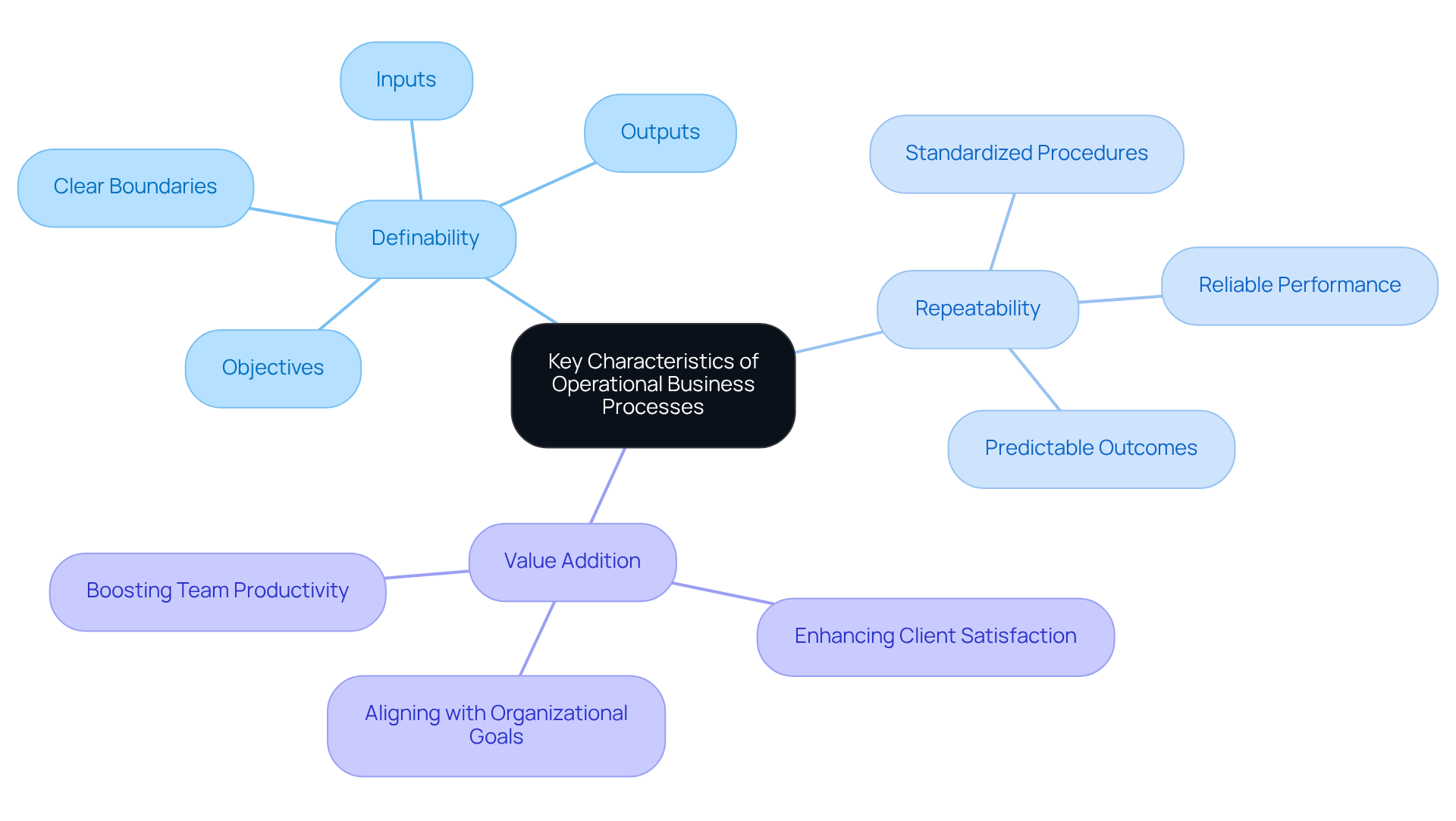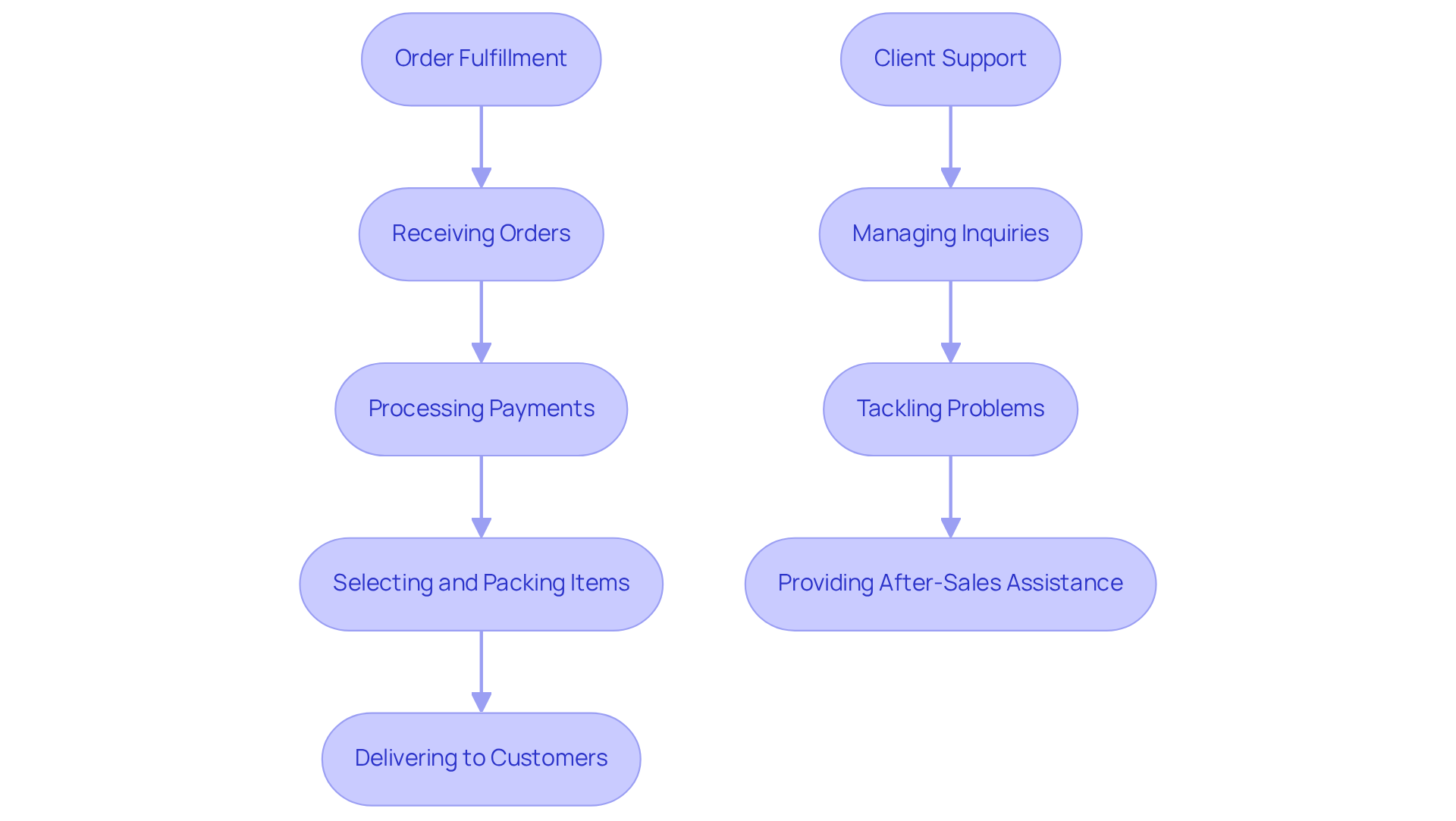
Overview
You might be wondering what operational business processes really are. Well, they’re those essential tasks that organizations tackle to create value and hit their goals. These processes can be grouped into three categories:
- Core activities
- Support activities
- Management activities
Understanding and optimizing these processes is key! When you think about it, they’re defined by their repeatability and the value they add. By honing in on these aspects, organizations can boost their efficiency and competitiveness, which can lead to better performance and happier customers. So, how can you start optimizing these processes in your own work?
Key Highlights:
- Operational business processes are essential tasks that create value and help organisations achieve their goals.
- Mapping these processes can identify areas for improvement, enhancing efficiency and competitiveness.
- Operational processes can be classified into three types: core activities (e.g., product development), support activities (e.g., IT support), and management activities (e.g., planning).
- Key characteristics of operational processes include definability (clear roles), repeatability (consistent performance), and value addition (enhancing customer satisfaction).
- Tools like SowFlow enhance definability and repeatability by streamlining documentation and ensuring standardised procedures.
- Examples of operational processes include order fulfilment (receiving orders, processing payments, delivering items) and client support (managing inquiries, providing after-sales assistance).
- Understanding and optimising these processes can lead to improved organisational performance and innovation.
Introduction
Understanding operational business processes is crucial for organizations looking to boost their efficiency and keep customers happy. You might be wondering what these processes involve. Well, they cover a range of tasks that are all about creating value—think everything from fulfilling orders to providing client support.
But here's the catch: many businesses find it tough to pinpoint and streamline these processes effectively. So, what are the main types of operational business processes, and how can your organization use them to get ahead of the competition?
Let’s dive into the different classifications, characteristics, and real-world applications of these processes. This article is packed with insights that could really transform how your organization performs!
Defining Operational Business Processes: Importance and Overview
You might be wondering what operational business processes really are. Well, they’re the crucial tasks that organizations dive into to create value for their clients and hit their business goals. Think of everything from order fulfillment to client service; these activities are key to keeping a company running smoothly and effectively. Understanding these operational business processes is crucial because they have a direct impact on productivity, customer satisfaction, and the overall performance of the organization.
By mapping out these operational business processes, companies can identify areas that need a little TLC. This not only helps streamline operations but also gives them that competitive edge in the market. So, why not take a closer look at how you can enhance your own processes? It could make a world of difference!

Types of Operational Business Processes: Classifications and Functions
You might be wondering how the operational business process activities fit together, right? Well, they can be grouped into a few key types:
- Core activities
- Support activities
- Management activities
Core activities are the ones that really matter—they directly create value for customers, like product development and service delivery. On the other hand, support activities are like the unsung heroes; they boost those essential tasks by providing the necessary resources and services, such as personnel and IT support. And then we have management activities, which are all about planning, monitoring, and making sure everything aligns with the organization’s goals.
Understanding these categories can really help your business streamline the operational business process and allocate resources more effectively. So, let’s dive in and explore how you can make the most of these insights!

Key Characteristics of Operational Business Processes: Structure and Impact
You might be wondering what makes the operational business process tick. Well, key characteristics like definability, repeatability, and value addition play a big role! Definability is all about having clear boundaries, inputs, outputs, and objectives. This clarity helps everyone involved understand their roles. As Anastasia Masadi, a Product Owner, puts it, "SowFlow has been a game changer in the way we document work and deliver to our clients." This really highlights how SowFlow boosts definability by letting users create SOPs without the hassle of taking separate screenshots or leaving their browser—talk about streamlining documentation!
Now, let’s dive into repeatability. This means that procedures can be reliably performed over time, leading to predictable outcomes. SowFlow makes this super easy by allowing teams to document their procedures in a standardized manner, ensuring everyone is on the same page. And let’s not forget about value addition! Functional methods need to enhance value, which means they should positively impact client satisfaction and organizational goals. SowFlow nails this with its intuitive interface and collaborative features that ramp up team productivity while keeping documentation accurate and accessible. By focusing on these key traits, organizations can really boost the efficiency and effectiveness of their operational business process. So, what do you think? Ready to explore how SowFlow can transform your documentation process?

Examples of Operational Business Processes: Real-World Applications
You might be wondering what the operational business process really looks like. Well, they cover everything from order fulfillment to client support, inventory management, and product development. For instance, in an e-commerce setup, the order fulfillment process is quite the journey! It starts with:
- Receiving orders
- Processing payments
- Selecting and packing items
- Delivering them right to the customers' doorsteps
Now, let’s talk about client support. This part often involves:
- Managing inquiries
- Tackling problems
- Providing after-sales assistance
These examples really highlight how crucial the operational business processes are for delivering value to customers and achieving business success. By taking a closer look at these processes, organizations can spot opportunities for improvement and spark innovation. So, what do you think? Are there areas in your own operations that could use a little boost?

Conclusion
Understanding operational business processes is super important for organizations that want to boost productivity and keep customers happy. You might be wondering what exactly these processes entail. Well, they cover those critical tasks that create value, from fulfilling orders to supporting clients. By mapping out and categorizing these activities effectively, businesses can streamline operations and gain a leg up in the marketplace.
Now, let’s dive into the different types of operational business processes, like core, support, and management activities. Each of these plays a vital role in hitting those organizational goals. Key traits such as definability, repeatability, and value addition are essential elements that help these processes run smoothly and effectively. Real-world examples show just how crucial these operational frameworks are, highlighting how they can lead to better outcomes and spark innovation.
In summary, grasping operational business processes isn’t just a nice-to-have; it’s a must for success. Companies should take a moment to evaluate their current processes and pinpoint areas for improvement. By doing this, they can ramp up their operational efficiency and ultimately provide even more value to their clients. Embracing this mindset can truly transform how organizations operate, fostering a culture of continuous improvement and responsiveness to market demands.
Frequently Asked Questions
What are operational business processes?
Operational business processes are the crucial tasks that organizations perform to create value for their clients and achieve their business goals, including activities like order fulfillment and client service.
Why are operational business processes important?
They are important because they directly impact productivity, customer satisfaction, and the overall performance of the organization.
How can mapping out operational business processes benefit a company?
Mapping out these processes helps companies identify areas that need improvement, streamline operations, and gain a competitive edge in the market.
👍
What others are liking
5 Steps to outline your ideal documentation structure
5 MINS READ
Where to start the your journey of mapping out your ideal documentation structure, aligning it with the very heartbeat of your organization?
Defining a winning level of detail in your process
3 MINS READ
What is too much detail, and what is too little? This article described in that winning level detail about what detail is enough.





